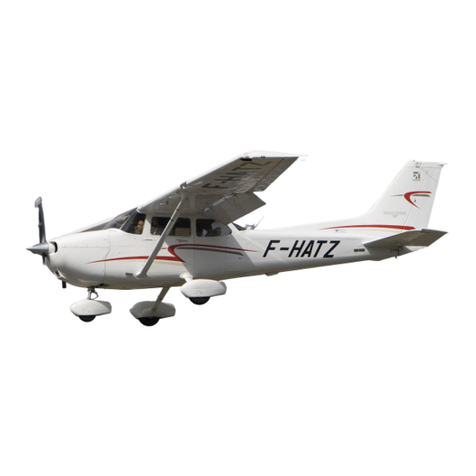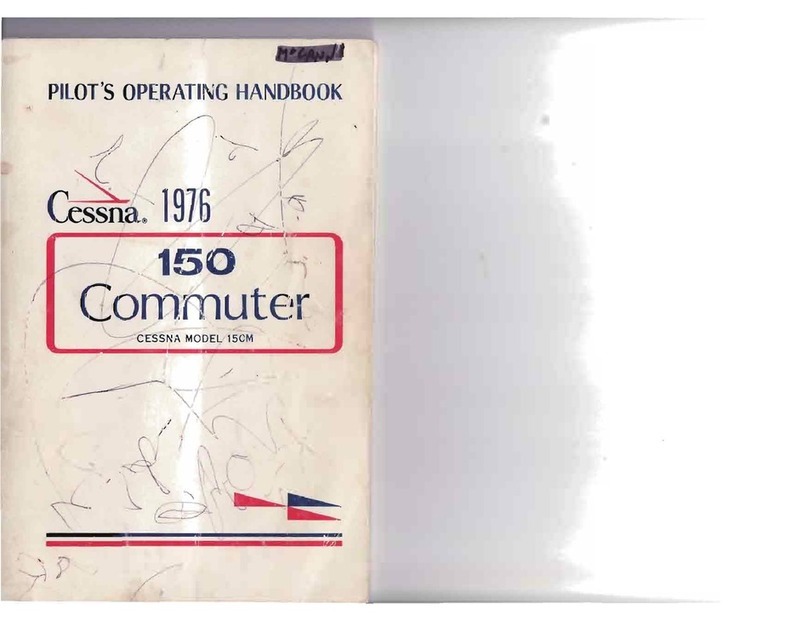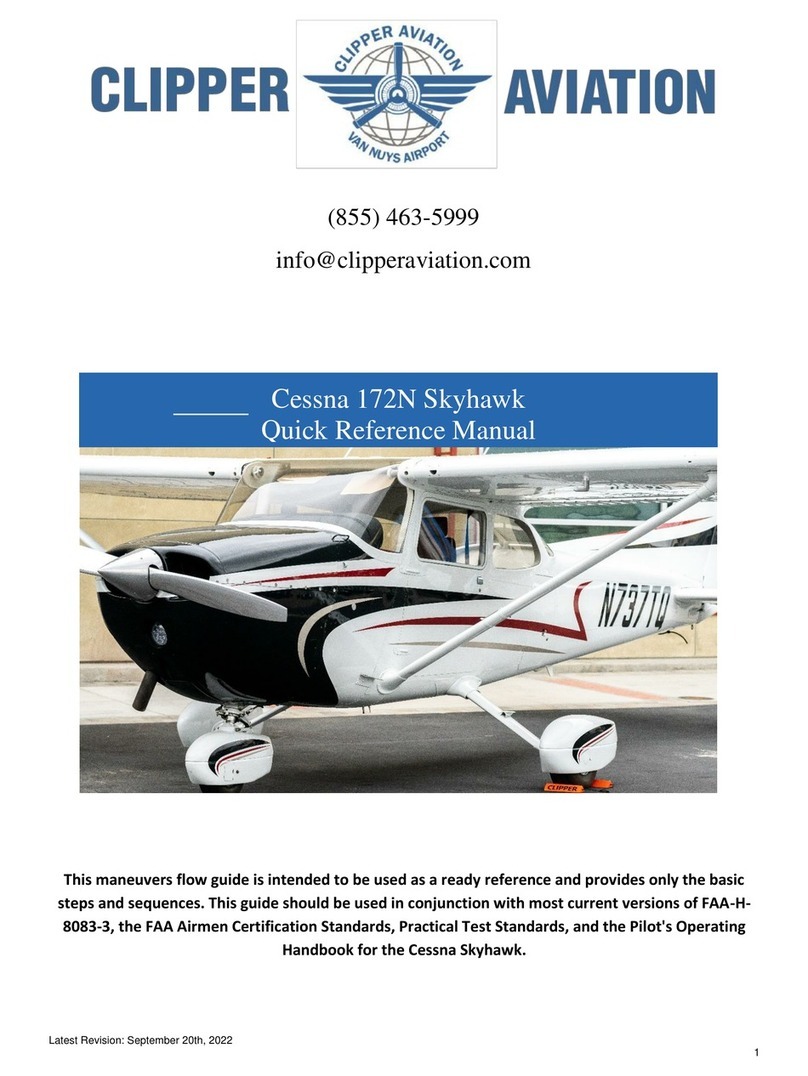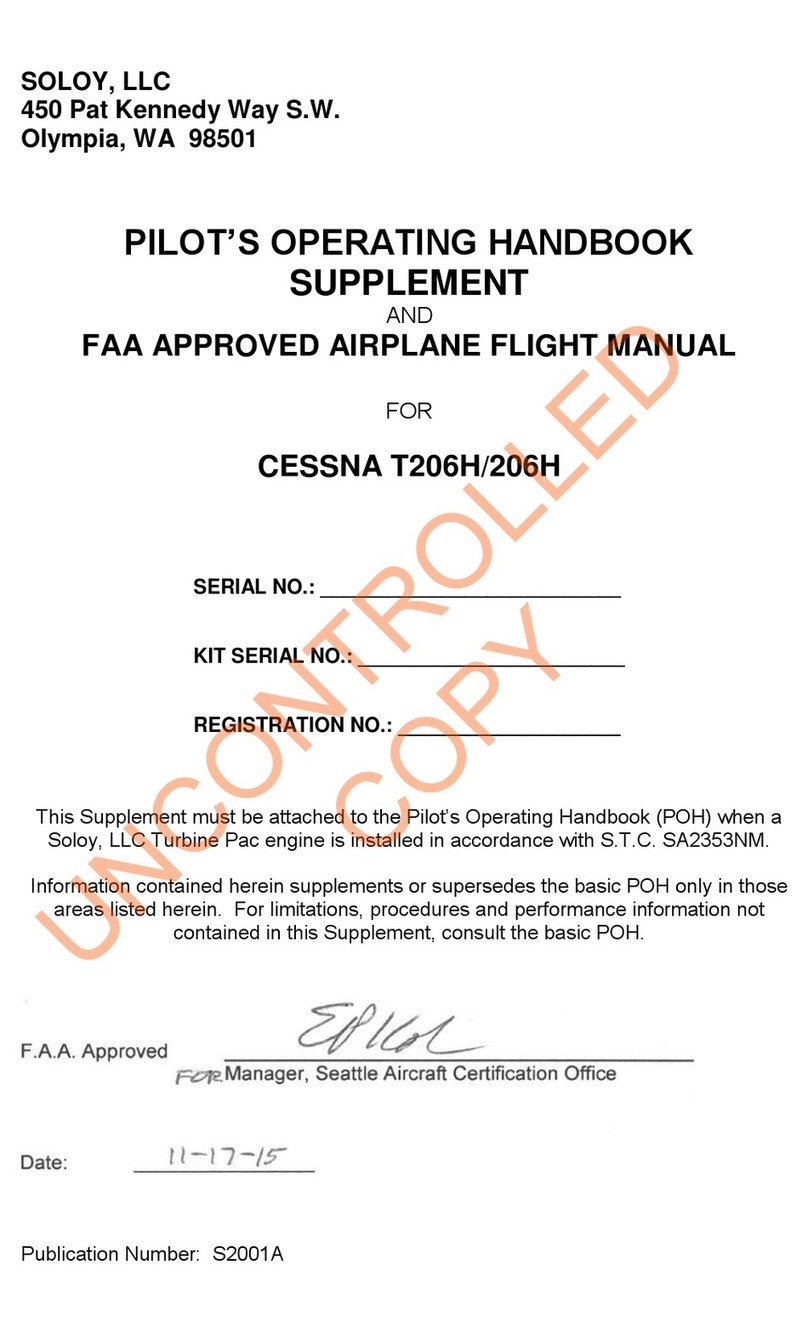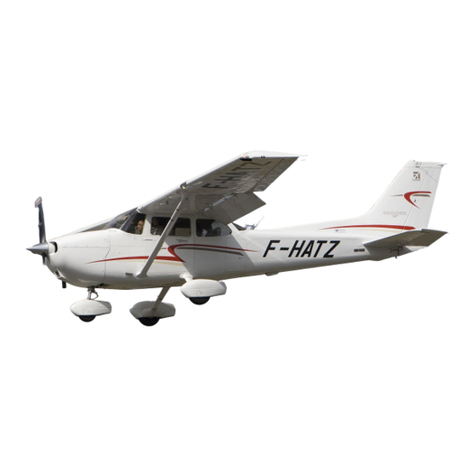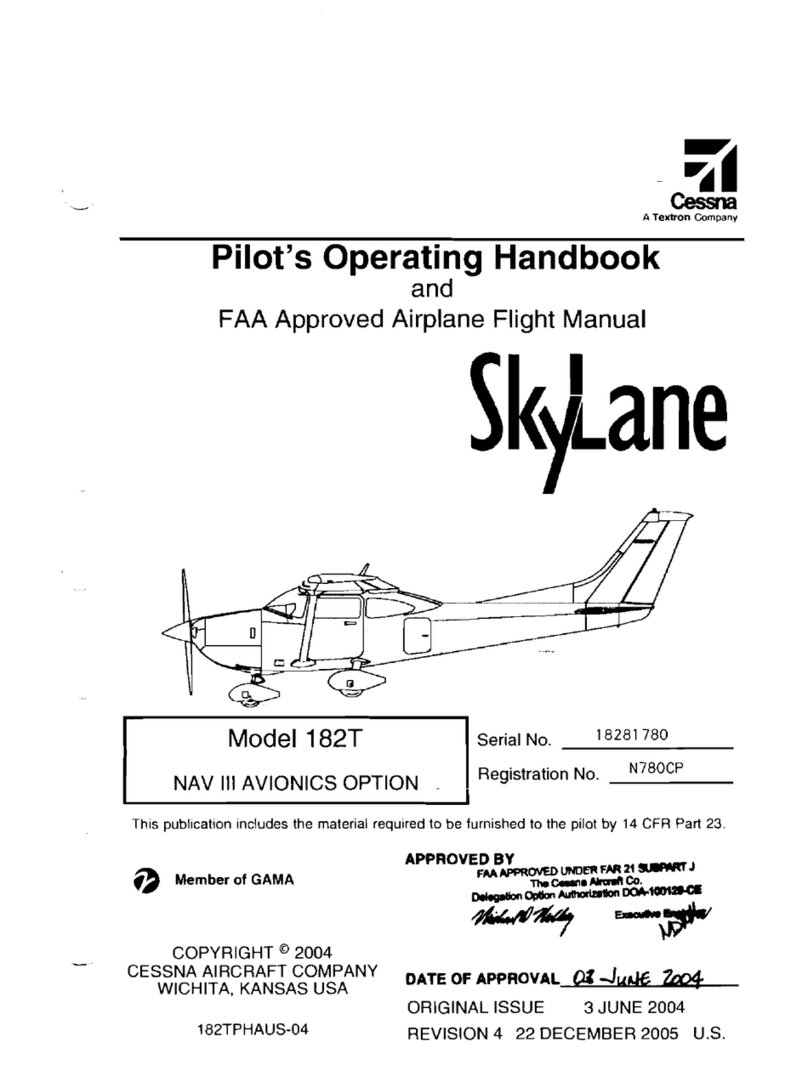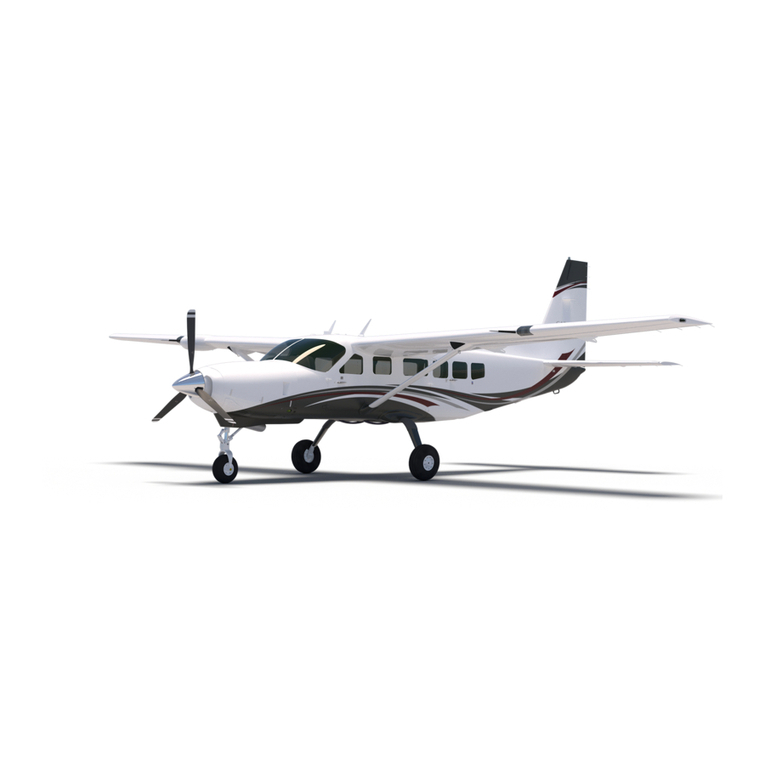
CESSNA AIRCRAFT COMPANY
SINGLE ENGINE
STRUCTURAL REPAIR MANUAL
INTRODUCTION
1. General
A. The information in this publication is based on data available at the time of publication and is
updated, supplemented, and automatically amended by all information issued in Service News
Letters, Service Bulletins, Supplier Service Notices, Publication Changes, Revisions, Reissues and
Temporary Revisions. All such amendments become part of and are specifically incorporated within
this publication. Users are urged to keep abreast of the latest amendments to this publication through
information available at Cessna Authorized Service Stations or through the Cessna Product Support
subscription services. Cessna Service Stations have also been supplied with a group of supplier
publications which provide disassembly, overhaul, and parts breakdowns for some of the various
supplier issued revisions and service information which may be reissued by Cessna’s Authorized
Service Stations and/or through Cessna’s subscription services.
WARNING: All inspection intervals, replacement time limits, overhaul time
limits, the method of inspection, life limits, cycle limits, etc.,
recommended by Cessna are solely based on the use of new,
remanufactured, or overhauled Cessna approved parts. If parts are
designed, manufactured, remanufactured, overhauled, purchased,
and/or approved by entities other than Cessna, then the data in
Cessna’s maintenance/service manuals and parts catalogs are no
longer applicable and the purchaser is warned not to rely on such
data for non-Cessna parts. All inspection intervals, replacement
time limits, overhaul time limits, the method of inspection, life
limits, cycle limits, etc., for such non-Cessna parts must be
obtained from the manufacturer and/or seller of such non-Cessna
parts.
2. Coverage
A. The Cessna Single Engine Structural Repair Manual is prepared in accordance with the Air Transport
Association Specification 2200 for Manufacturers’ Technical Data.
B. ThisStructuralRepairManualcontainsmaterialidentificationforstructuresubjecttofield repair; typical
repairs applicable to structural components; information relative to material substitution and fastener
installation; and a description of procedures that must be performed with structural repair, such as
protective treatment of the repair and sealing.
C. This manual will serve as a medium through which all single engine operators will be advised of actual
repairs. As service records indicate a requirement, this manual will be revised to include additional
specificrepairs.
3. Airplane Identification
A. To identify structural differences to associated airplanes, the specific airplane identity may appear in
the figure and the text. Items not identified for a specific airplane or group of airplanes are suitable
for all airplanes.
4. Aerofiche (microfiche)
A. The Structural Repair Manual is prepared for Aerofiche presentation in addition to 8 ½by 11 inch loose
leaf manual format. To facilitate the use of the aerofiche, a list of chapters with an aerofiche frame
reference has bee tabulated and incorporated into the Introduction of the Structural Repair Manual.
B. Aerofiche isa microformreproductionof thecontents ofthe 8½by11 inchmanual ina formconvenient
for service areas. An aerofiche reader is required to view the 4-inch by 6-inch aerofiche card. Each
aerofiche card contains 12 horizontal rows of 24 images each. An image displays information equal
INTRODUCTION Page 1
© Cessna Aircraft Company Jun 1/2005
